



Aggressive hybrid funds may be a lucrative option for investors looking to invest in equity markets at the current levels, but are cautious of valuations and unsure of the entry point.
Financial advisors suggest that risk management should be the key focus of investors at this point as some pockets of the markets look pricey.
“Fund managers are employing asset allocation based on market conditions and are maintaining a diversified portfolio, investing between 65 and 80 per cent in equities and the rest [35-20 per cent] in debt. Some managers are also using arbitrage opportunities for hedging their overall portfolio,” said Siddharth Alok, Assistant Vice President Investments, Multi Ark Wealth-Epsilon Money.
Also read | Top healthcare stocks that keep mutual funds in the pink of health
How are aggressive hybrid funds placed?
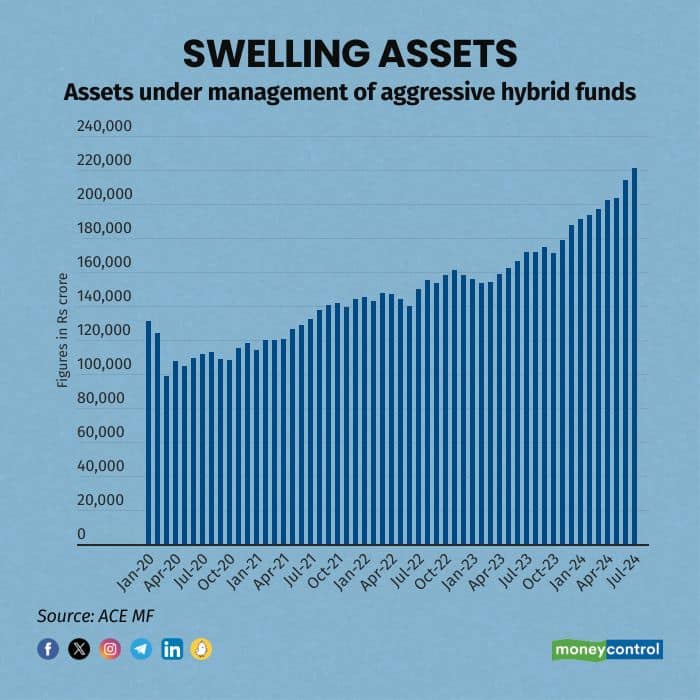
Aggressive hybrid funds — a category under hybrid mutual funds — invest between 65 and 80 per cent in equity and the rest in debt assets. In most aggressive hybrid funds available in the market, fund managers run a static equity exposure of around 70-75 per cent and the rest (30-25 per cent) in debt.
Balanced advantage funds (BAFs) are a category of hybrid funds where there is dynamic switching of allocation between debt and equity depending on market valuations. In BAFs, investment in equity or debt is managed dynamically between 0 and 100 per cent.
However, in aggressive hybrid funds, because of higher valuations, the major calls pertain to equity. Funds shift more towards conservative portfolio or large-cap names.
Also read | MC Explains: How NPCI's new UPI Circle feature benefits users and what precautions to take
Data available with ACE MF shows that over the last four years, aggressive hybrid funds as a category have maintained at least 70 per cent in equities.
Also, as per the July data, HSBC Aggressive Hybrid Fund had highest equity exposure at 77.68 per cent, while Shriram Aggressive Hybrid Fund had lowest equity allocation at 65.51 per cent.
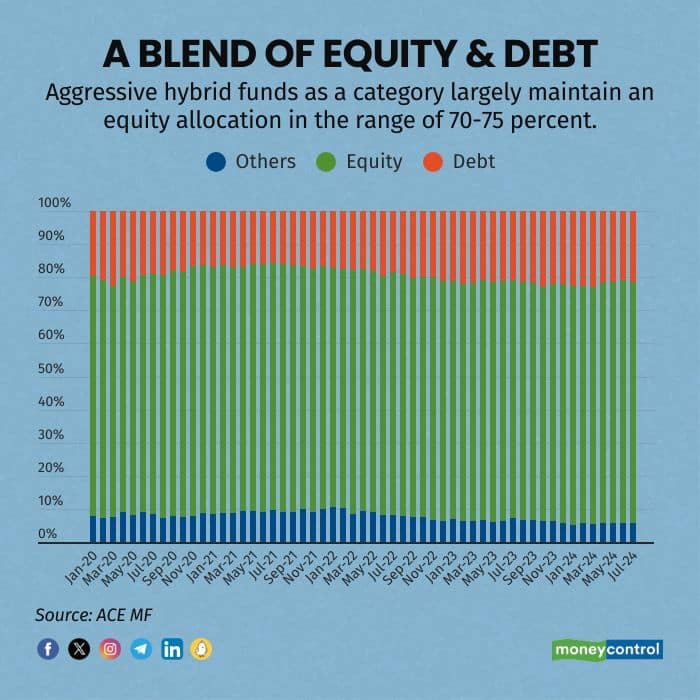
“Most hybrid funds use a model that helps them cut through market noise and make decisions based on available data. Given the current high valuations, many aggressive hybrid funds have reduced their equity allocations or added more defensive positions,” said Alekh Yadav, Head of Investment Products, Sanctum Wealth.
Return generation
Aggressive hybrid funds allow investors to participate on the upside, while cushioning your downside as compared to pure equity funds.
Even top performing schemes from the aggressive hybrid funds have managed to deliver better returns and matched with the returns to that of the large-cap funds category.
By design hybrid funds protect against extreme volatility and offer growth through equity and stability via debt.
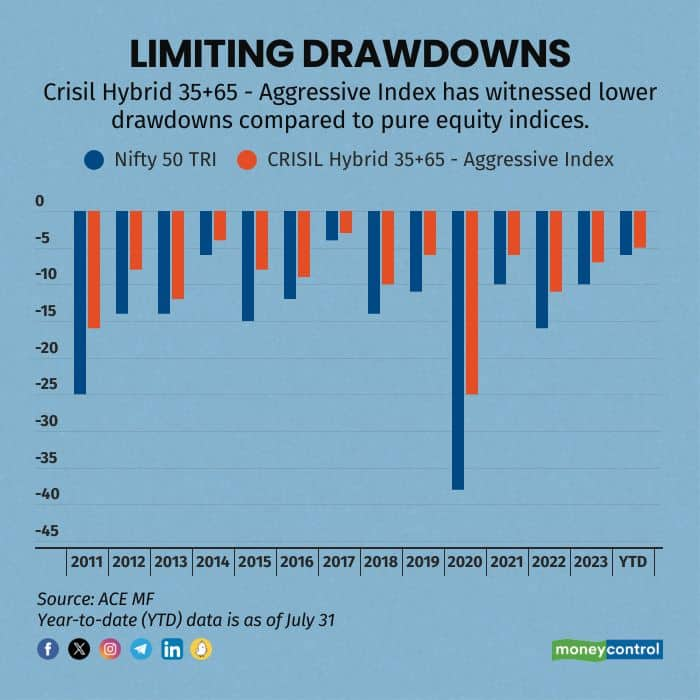
“Over a long period of time, aggressive hybrid funds have delivered higher returns compared to Nifty. On a risk adjusted basis, aggressive hybrid funds can give returns compared to a large cap fund with a much lower volatility,” said Bhavesh Jain, Co-Head of Factor investing, Edelweiss Mutual Fund.
On a three-year and five-year basis, the aggressive hybrid funds category on average has delivered annualised returns between 16.04 and 18.35 per cent, as per the data available with ACE MF.
Also read | How a home insurance cover can come to your rescue during monsoons
Crisil Hybrid 35+65 - Aggressive Index, which is tilted towards equities, is used as a benchmark by most of the aggressive hybrid funds. Data shows that over the years, the index has witnessed lower drawdowns, as compared to pure equity indices.
A word of caution
Aggressive hybrid funds offer a balanced approach between equity and debt, they also come with certain drawbacks that investors need to consider.
Since a significant portion of the fund is invested in equities (typically around 75 per cent), market volatility holds the key. For instance, during market downturns, the equity component can lead to losses, making them riskier than pure debt funds or conservative hybrid funds.
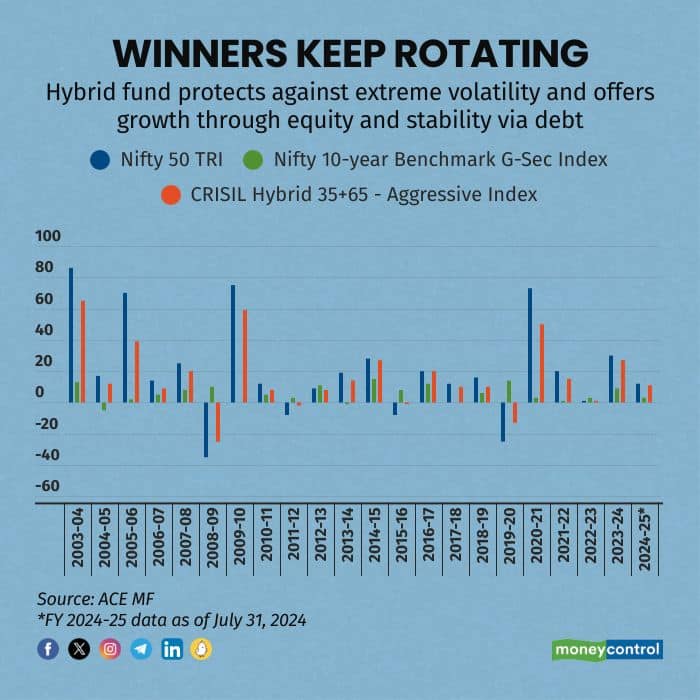
“Aggressive hybrids hold around 75 per cent in pure equity, and the rest in debt. If I want to invest in an aggressive hybrid category, might as well, I just keep my portfolio separate. Just because markets are expensive, don't jump into this category,” said Rushabh Desai, Founder, Rupee With Rushabh Investment Services.
How do they fit in an investor’s portfolio?
According to financial experts, aggressive hybrid funds work for investors who have moderate risk profiles.
“These funds fall less compared to pure equity funds when the market slips. As a result, investors who stay put longer can benefit from a bull run. Also, by keeping a minimum of 65 per cent in equities, these funds qualify for equity taxation,” said Amol Joshi, Founder of Plan Rupee Investment Services.
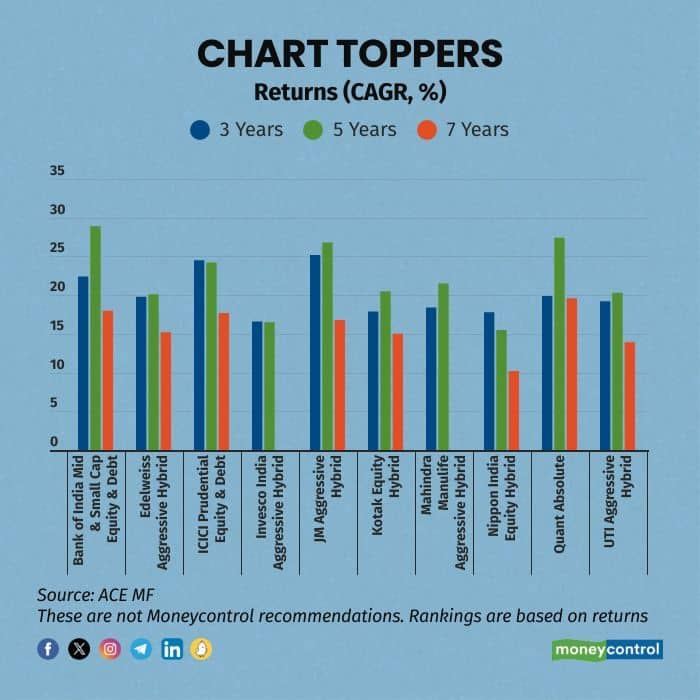
In light of the prevailing market trends, these funds can be a good choice for retail investors looking to build a portfolio with about two-thirds in equities and one-third in debt.
“They offer a buffer against market corrections while still allowing significant participation in equity markets. Besides, these funds benefit from favourable tax treatment similar to that of equity investments, which is advantageous for investors,” said Yadav.
Also read | Is Net SIP a misnomer?
Aggressive hybrid funds can be a valuable part of a diversified investment portfolio, offering a happy blend of growth potential and risk management.
Discover the latest Business News, Sensex, and Nifty updates. Obtain Personal Finance insights, tax queries, and expert opinions on Moneycontrol or download the Moneycontrol App to stay updated!
Find the best of Al News in one place, specially curated for you every weekend.
Stay on top of the latest tech trends and biggest startup news.